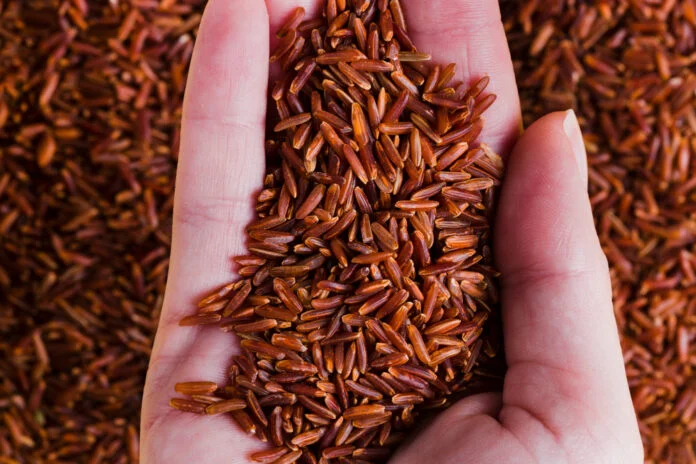Organic Red and Brown Rice: A Guide to Nutritious and Delicious Recipes
Rice, a humble grain, has been a staple diet for more than half of the world’s population. Out of the countless varieties of rice available globally, organic red and brown rice are becoming increasingly popular due to their impressive nutritional profiles.
If you’re looking to include these nutrient-packed grains in your meals, we have some delicious brown rice recipes, and insights into the benefits of organic red rice, for you.
Understanding Organic Red Rice
Organic red rice, also known as Navara rice, is a unique, long grain variety with a red tint derived from antioxidants like anthocyanin, apigenin, myricetin, and quercetin. It’s primarily cultivated in Palakkad, Kerala, India, and is available in hulled, semi-hulled, and unhulled formats. It’s high in nutritional value and boasts a delightful nutty flavor.
Popular Varieties of Red Rice
- Bhutanese Red Rice
- West African Rice
- Thai Red Cargo Rice
- Kerala Matta Rice
- Konkan Red Rice
Nutritional Values of Red Rice
Red rice is packed with essential nutrients, making it a beneficial addition to any diet. Below is the nutritional value per 100g serving:
| Nutritional Element | Amount | % Daily Value |
| Calories | 405 Kcal | – |
| Total Fat | 4.9 g | 14% |
| Sodium | 6 mg | 0.40% |
| Potassium | 256 mg | 5.45% |
| Protein | 7 g | 14% |
| Carbohydrates | 86.7 g | 13.55% |
| Iron | 5.5 mg | 68.75% |
| Zinc | 3.3 mg | 30% |
| Dietary Fibre | 2.7 g | 7.11% |
*Values are based on a 2000-calorie diet.
Health Benefits of Organic Red Rice
Organic red rice offers numerous health benefits, making it a key component in a balanced diet.
- Controls Blood Sugar: Low in glycaemic index, red rice can help control sugar levels, beneficial for people with diabetes.
- Aids Respiratory Health: Red rice is high in magnesium, which can potentially prevent severe asthma attacks.
- Promotes Weight Loss: Low in fat and carbs, red rice keeps you feeling full for longer, aiding weight loss.
- Improves Digestion: Red rice is high in soluble and insoluble fiber, improving nutrient absorption and bowel movements.
- Enhances Skin Health: Red rice contains anthocyanins, which prevent age-related skin diseases and promote a healthy glow.
- Boosts Heart Health: As a whole grain, red rice helps reduce bad cholesterol and maintain cardiovascular health.
- Strengthens Bones: High in magnesium and calcium, red rice improves bone health and prevents bone-related diseases like Osteoporosis.
Preparing Red Rice
Though cooking red rice may take more time compared to white rice due to its thicker outer bran, the health benefits are worth the wait. You can cook red rice in a saucepan or a pressure cooker.
Cooking in a Saucepan:
- Rinse the rice and soak for 30 minutes.
- Boil one cup of rice in three cups of water.
- Stir and fluff the rice every five minutes to prevent sticking.
- Let it simmer for 30-40 minutes until cooked.
Cooking in a Pressure Cooker:
- Wash the rice and soak it for 20 minutes.
- Add two cups of water for every two cups of rice in the pressure cooker.
- Cook on medium heat until you hear six whistles.
- Let the steam release naturally before opening the lid and fluffing the rice.
Potential Side Effects of Red Rice
While red rice offers numerous benefits, overconsumption may lead to some side effects:
- Allergic Reactions: Some people may experience swelling, rashes, itching, and redness on the throat, tongue, and face.
- Indigestion: Consuming excessive red rice might cause gastrointestinal problems like bloating and discomfort.
- Dizziness: High sugar content in red rice can cause feelings of fullness, potentially leading to skipped meals and energy drainage.
Comparing Red Rice and Brown Rice
Both red and brown rice are nutritious alternatives to white rice, rich in potassium, vitamins, magnesium, calcium, and fiber. However, red rice has a few additional benefits:
- Higher Antioxidant Properties: Red rice has almost ten times the antioxidant properties of brown rice.
- High in Selenium: Some studies suggest that selenium intake can reduce the risk of coronary heart disease.
- Rich in Manganese: Red rice is high in manganese, crucial for bone development and fibrous tissue formation.
Brown Rice Recipes for a Healthy Diet
Incorporating brown rice into your daily meals is easier than you think. Here are a few simple and nutritious brown rice recipes to get you started:
- Brown Rice Salad:
A perfect dish for a warm day, a brown rice salad can be made with cooked brown rice, diced vegetables, herbs, and a vinaigrette dressing.
- Brown Rice Pilaf:
Sautee some onions, garlic, and your choice of veggies. Add in cooked brown rice and season to taste. Serve hot.
- Herbed Brown Rice:
Mix cooked brown rice with fresh herbs like basil, thyme, or parsley. Add some lemon zest for an added zing.
- Brown Rice Soup:
Add cooked brown rice to your favorite vegetable or chicken soup for a hearty and satisfying meal.
- Brown Rice Khichdi:
A comforting Indian dish, khichdi can be made with brown rice, lentils, and a mix of Indian spices.
Conclusion
Organic red and brown rice are not only nutrient-rich but also versatile. They can be incorporated into a variety of dishes, adding both flavor and health benefits. So, whether you’re planning to make a warm bowl of soup, a refreshing salad, or a hearty pilaf, consider using these wholesome grains. With the right recipes and cooking methods, maintaining a nutritious diet can be as easy as cooking a pot of rice.

